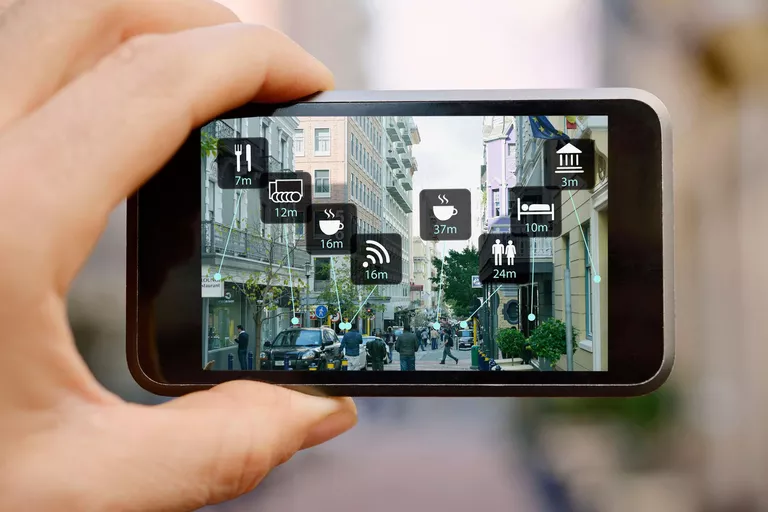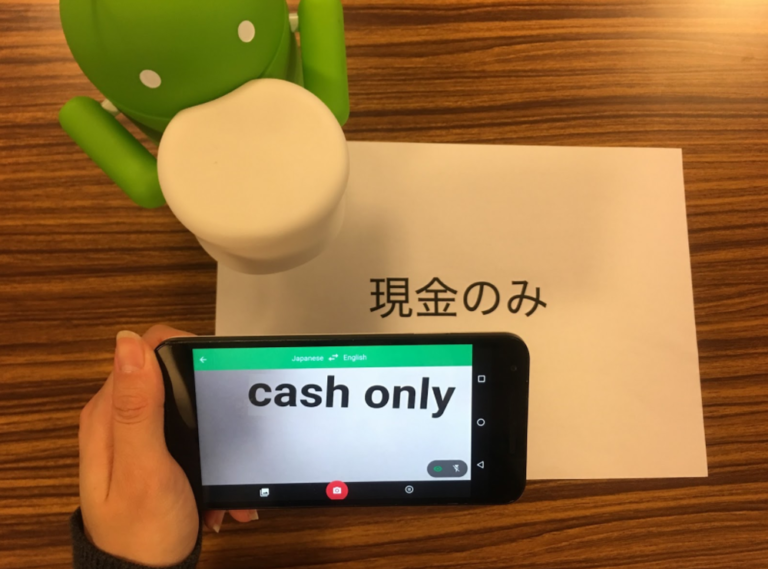
Augmented reality is an interactive experience of a real-world environment where the objects that reside in the real-world are enhanced by computer-generated information[1]. This technology consists of the creation of a situation in which virtual information and objects merge with reality. This offers the user an enriched experience without interfering with their natural perception.
AR can be used to expand our senses, defining a direct or indirect vision of a physical environment of the real world, whose elements are combined with virtual items, such as texts, images, audio or videos, 2D or 3D objects for the creation of mixed reality on real time.
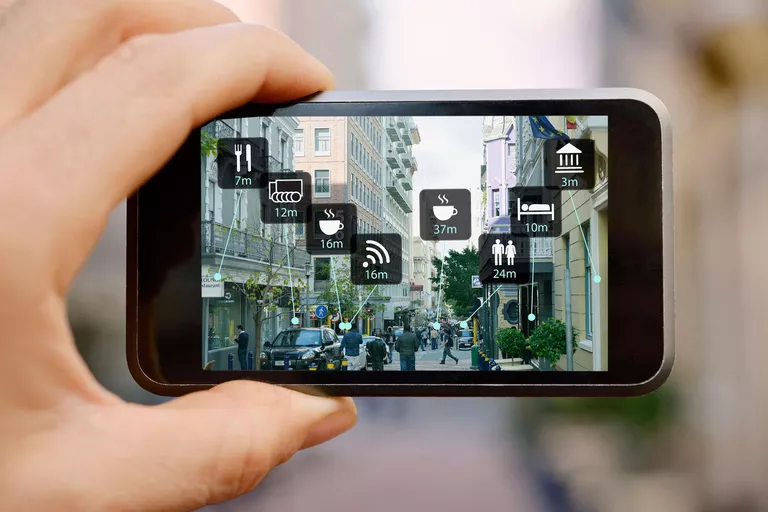
Augmented Reality was introduced in the late ’60s, where Ivan Sutherland developed the first head-mounted display with generated computer graphics [2]. This technology was used mainly for Military equipment during the ‘80s and ‘90s [3].
With the introduction of the smartphones with GPS and accelerometers, in 2003 Adrian David Cheok presented the Human Pacman, a game that uses GPS and accelerometers to determine where the objects have to be placed to be “eat” by the user simulating to be the “HUMAN PACMAN”[4]. It was also introduced in several areas like vehicles with Head-Up Displays (HUDs) projected on the front windshield, indicating the route, speed, GPS directions, traffic signals, and lanes detection[5]. There is also AR in toys like drones [6] and robots applications for movements programming [7].
Augmented reality highly relies on image processing (Computer vision [8]) and at a secondary level in the user’s position detection with GPS and accelerometers. Computer vision evolved at giant steps since a decade ago because of the implementation of artificial neural networks (ANN), that is a technology that simulates the human brain to capture information of different sources like images [9]. ANN can be designed and trained with the capability of capturing the type of object that is found in a picture. This makes it possible to detect objects, “read signs”, recognize human faces, and characters on a text.
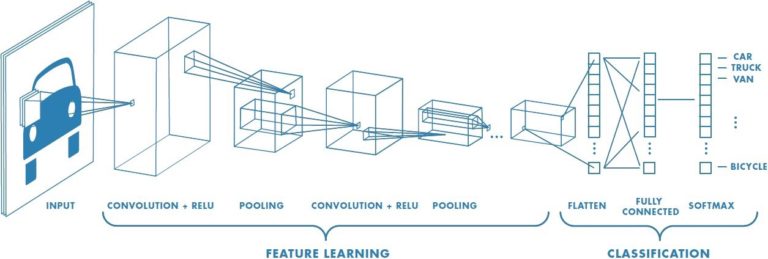
The ANN technology requires high processing power, and this is why until now a complex real-time AR interface was not possible. Nowadays with the current processing power and camera sensors present on smartphones, console accessories, and vehicles interfaces, it is possible to use AR in real-time with a high level of detail.
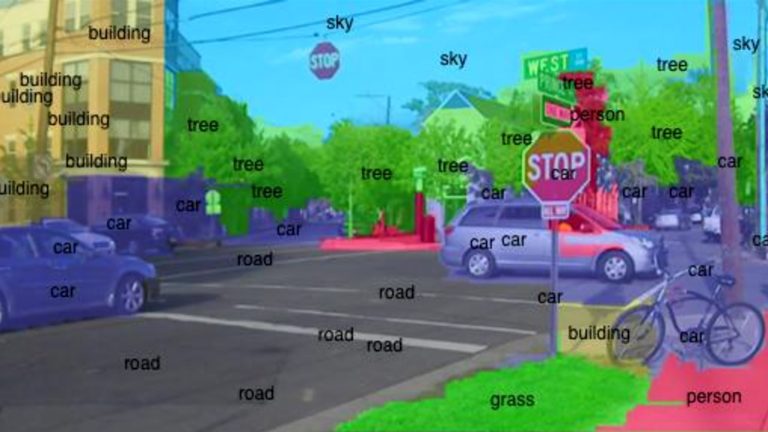
Seeing the opportunity to improve the city virtual interaction as a smart city, governments are starting to integrate this technology into their information services, helping people to get information about interesting places creating an immersive experience for tourists. AR can also enable the citizens to interact with different public services, for instance, check the bus route / stops on screen, find a public service placement, check the queue status of public service by merely pointing to the building, reporting and checking public infrastructure repairs. AR also enable the citizens interacting with others by sharing notes of itself or taking notes in a specific place.
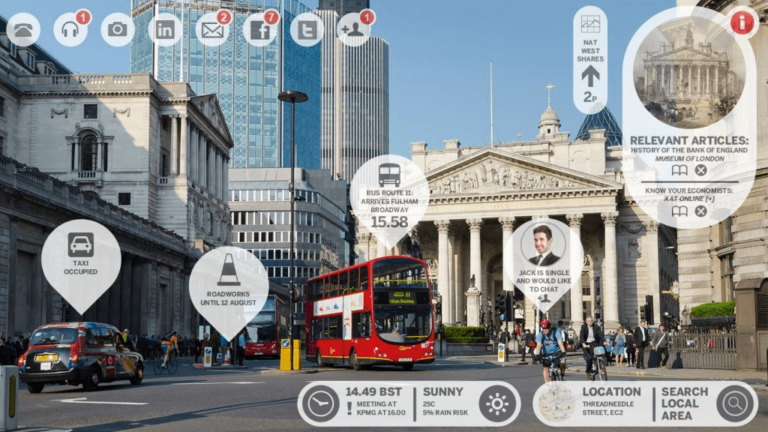
- https://en.wikipedia.org/wiki/Augmented_reality
- https://en.wikipedia.org/wiki/The_Sword_of_Damocles_(virtual_reality)
- https://en.wikipedia.org/wiki/Augmented_reality#History
- https://www.academia.edu/1376167/Human_Pacman_a_sensing-based_mobile_entertainment_system_with_ubiquitous_computing_and_tangible_interaction
- https://www.computerworld.com/article/2498299/pioneer-launches-car-navigation-with-augmented-reality–heads-up-displays.html
- https://edgybees.com/games/droneprix-ar/
- https://www.gestalt-robotics.com/augmented-reality.html
- https://en.wikipedia.org/wiki/Computer_vision
- https://en.wikipedia.org/wiki/Artificial_neural_network

